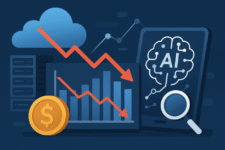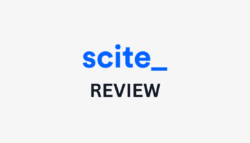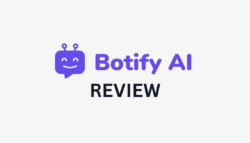
As companies increasingly migrate workloads to the cloud, managing associated costs has become a critical factor. Research indicates that approximately one-third of public cloud spending produces no useful work, with Gartner estimating this waste at 30% of global spending annually. Engineers need reliable performance while finance teams seek predictable expenses. However, both groups typically discover overspending only after receiving invoices. Artificial intelligence bridges this gap by analyzing real-time usage data and automating routine optimization steps. This helps organizations maintain responsive services while reducing waste across major cloud platforms. This article outlines how AI achieves cost efficiency, describes practical strategies, and explains how teams can integrate cost awareness into engineering and financial operations.
Understanding the Cloud Cost Problem
Cloud services make it easy to quickly launch servers, databases, or event queues. However, this convenience also makes it easy to overlook idle resources, oversized machines, or unnecessary test environments. Flexera reports that 28% of cloud spend goes unused, while the FinOps Foundation notes that “reducing waste” became practitioners’ top priority in 2024. Typically, overspending results from multiple small decisions—like leaving extra nodes running, allocating excess storage, or improperly configuring autoscaling, rather than a single mistake. Traditional cost reviews occur weeks later, meaning corrections arrive after money is already spent.
AI effectively tackles this issue. Machine learning models analyze historical demand, detect patterns, and offer ongoing recommendations. They correlate usage, performance, and costs across various services, generating clear, actionable strategies to optimize spending. AI can promptly identify abnormal expenses, enabling teams to address problems quickly instead of letting costs escalate unnoticed. AI helps finance teams produce accurate forecasts and empowers engineers to remain agile.
AI-Driven Cost Optimization Strategies
AI enhances cloud cost efficiency through several complementary methods. Each strategy delivers measurable savings independently, and together they create a reinforcing cycle of insight and action.
- Workload Placement: AI matches each workload with infrastructure that meets performance requirements at the lowest price. For example, it may determine that latency-sensitive APIs should remain in premium regions, while overnight analytics jobs can run on discounted spot instances in less expensive zones. By matching resource demands with provider pricing, AI prevents unnecessary spending on premium capacity. Multi-cloud optimization frequently achieves significant savings without altering the existing code.
- Anomaly Detection: Misconfigured jobs or malicious actions can trigger spending spikes that remain hidden until invoicing. AWS Cost Anomaly Detection, Azure Cost Management, and Google Cloud Recommender use machine learning to monitor daily usage patterns, alerting teams when costs deviate from normal usage. Early alerts help engineers swiftly address problematic resources or faulty deployments before costs escalate significantly.
- Rightsizing: Oversized servers represent the most visible form of waste. Google Cloud analyzes eight days of usage data and recommends smaller machine types when demand remains consistently low. Azure Advisor applies similar approaches to virtual machines, databases, and Kubernetes clusters. Organizations that regularly implement these recommendations typically reduce infrastructure costs by 30% or more.
- Predictive Budgeting: Forecasting future spending becomes challenging when usage fluctuates regularly. AI-driven forecasting, based on historical cost data, provides finance teams with accurate spending predictions. These forecasts enable proactive budget management, allowing teams to intervene early if projects risk exceeding their budgets. Integrated what-if features demonstrate the likely impact of launching new services or running marketing campaigns.
- Predictive Autoscaling: Traditional autoscaling reacts to real-time demand. However, AI models predict future usage and proactively adjust resources. For instance, Google’s predictive autoscaling analyzes historical CPU usage to scale up resources minutes ahead of anticipated spikes. This approach reduces the need for excessive idle capacity, cutting costs while maintaining performance.
Although each of these strategies is designed to address specific forms of waste such as idle capacity, sudden usage spikes, or inadequate long-term planning, they reinforce one another. Rightsizing reduces the baseline, predictive autoscaling smooths peaks, and anomaly detection flags rare outliers. Workload placement shifts tasks to more economical environments, and predictive budgeting converts these optimizations into reliable financial plans.
Integrating AI into DevOps and FinOps
Tools alone cannot deliver savings unless integrated into daily workflows. Organizations should treat cost metrics as core operational data visible to both engineering and finance teams throughout the development lifecycle.
For DevOps, integration begins with CI/CD pipelines. Infrastructure-as-code templates should trigger automated cost checks before deployment, blocking changes that would significantly increase expenses without justification. AI can automatically generate tickets for oversized resources directly into developer task boards. Cost alerts appearing in familiar dashboards or communication channels help engineers quickly identify and resolve cost issues alongside performance concerns.
FinOps teams use AI to allocate and forecast costs accurately. AI can assign costs to business units even when explicit tags are missing by analyzing usage patterns. Finance teams share near real-time forecasts with product managers, enabling proactive budgeting decisions before feature launches. Regular FinOps meetings shift from reactive cost reviews to forward-looking planning driven by AI insights.
Best Practices and Common Pitfalls
Teams successful with AI-driven cloud cost optimization follow several key practices:
- Ensure reliable data: Accurate tagging, consistent usage metrics, and unified billing views are critical. AI cannot optimize with incomplete or conflicting data.
Align with Business Goals: Tie optimization to service level objectives and customer impact. Savings that compromise reliability are counterproductive.
Automate Gradually: Start with recommendations, progress to partial automation, and fully automate stable workloads with ongoing feedback. - Share Accountability: Make cost a shared responsibility between engineering and finance, with clear dashboards and alerts to drive action.
Common mistakes include over-relying on automated rightsizing, scaling without limits, applying uniform thresholds to diverse workloads, or ignoring provider-specific discounts. Regular governance reviews ensure automation remains aligned with business policies.
Looking Ahead
AI’s role in cloud cost management continues to expand. Providers now embed machine learning in virtually every optimization feature, from Amazon’s recommendation engine to Google’s predictive autoscaling. As models mature, they will likely incorporate sustainability data—such as regional carbon intensity—enabling placement decisions that reduce both costs and environmental impact. Natural language interfaces are emerging; users can already query chatbots about yesterday’s spending or next quarter’s forecast. In coming years, the industry will likely develop semi-autonomous platforms that negotiate reserved instance purchases, place workloads across multiple clouds, and enforce budgets automatically, escalating to humans only for exceptions.
The Bottom Line
Cloud waste could be manage with AI. By employing workload placement, anomaly detection, rightsizing, predictive autoscaling, and budgeting, organizations can maintain robust services while minimizing unnecessary costs. These tools are available across major clouds and third-party platforms. Success depends on integrating AI into DevOps and FinOps workflows, ensuring data quality, and fostering shared accountability. With these elements in place, AI transforms cloud cost management into a continuous, data-driven process that benefits engineers, developers, and finance teams.
The post AI-Driven Cloud Cost Optimization: Strategies and Best Practices appeared first on Unite.AI.



